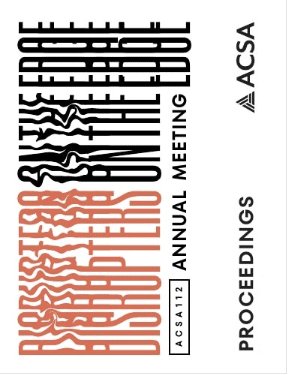Author(s): Pari Riahi
This pedagogical project takes a position against seemingly complete digital drawings which appear to be too over-determined, too finished, and too realistic renditions of ideas. Instead, it calls for reflection on what should constitute drawing methods and practices for a beginning design studio allowing ideas to mature and evolve at a slower pace. Nowadays, in architectural practice, the use of digital technologies is synonymous with speed, efficiency, and the ease of collaboration and access. The widespread use of these platforms have fortified a linear augmentation towards fast produced, multi-sourced drawings. By resisting the immediacy, that is implicitly built into most of digital platforms, the paper discusses the possibility of imagining a different drawing agenda, one that enables spatial, formal, and programmatic discoveries for students who start their education in architecture. Developing links between evidence and imagination is the primary objective of the studio which proposes a fully engaged practice of drawing. The following questions have been foundational for the studio: How can digital drawings be a vehicle for experimentation and discovery from the onset and without being consumed with technological procedures? What replaces traditional methods of drawing in studio and how can one engage the digital, without being subsumed by technique? What does the future of drawing, in the pedagogical context look like? Cohering these questions and concerns has given shape to the development of a curriculum taught over 6 years to beginning design graduate students.
https://doi.org/10.35483/ACSA.AM.112.69
Volume Editors
Germane Barnes & Blair Satterfield
ISBN
978-1-944214-45-6

 Study Architecture
Study Architecture  ProPEL
ProPEL 
